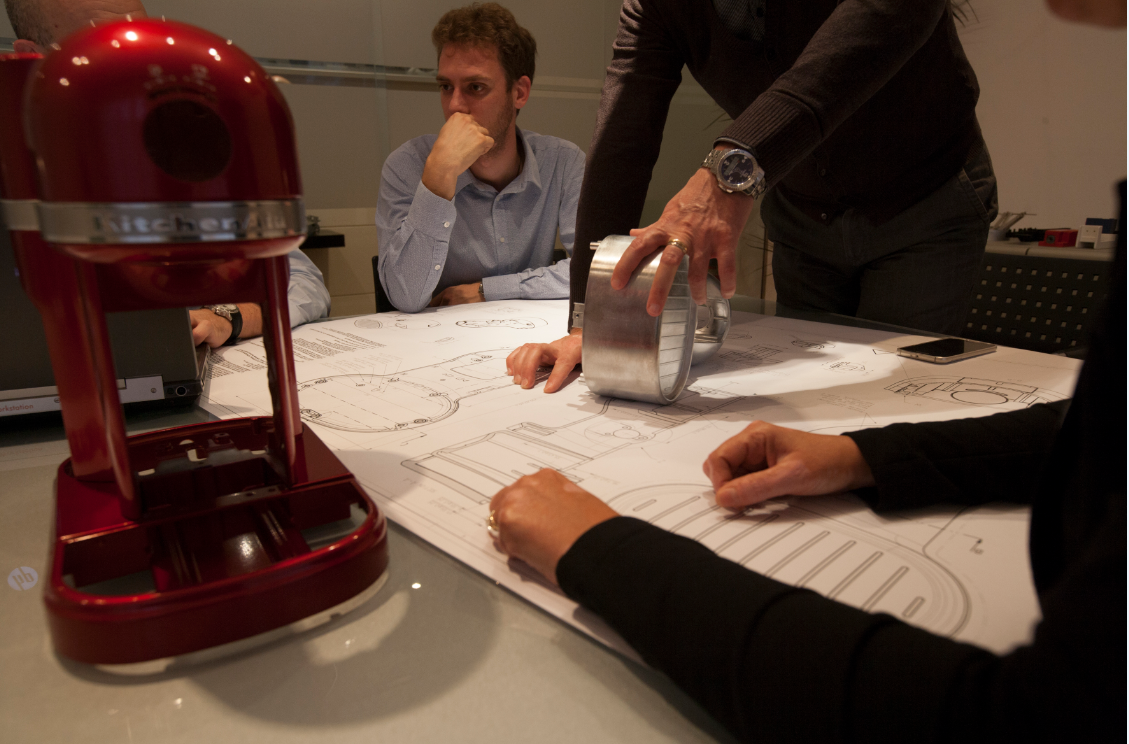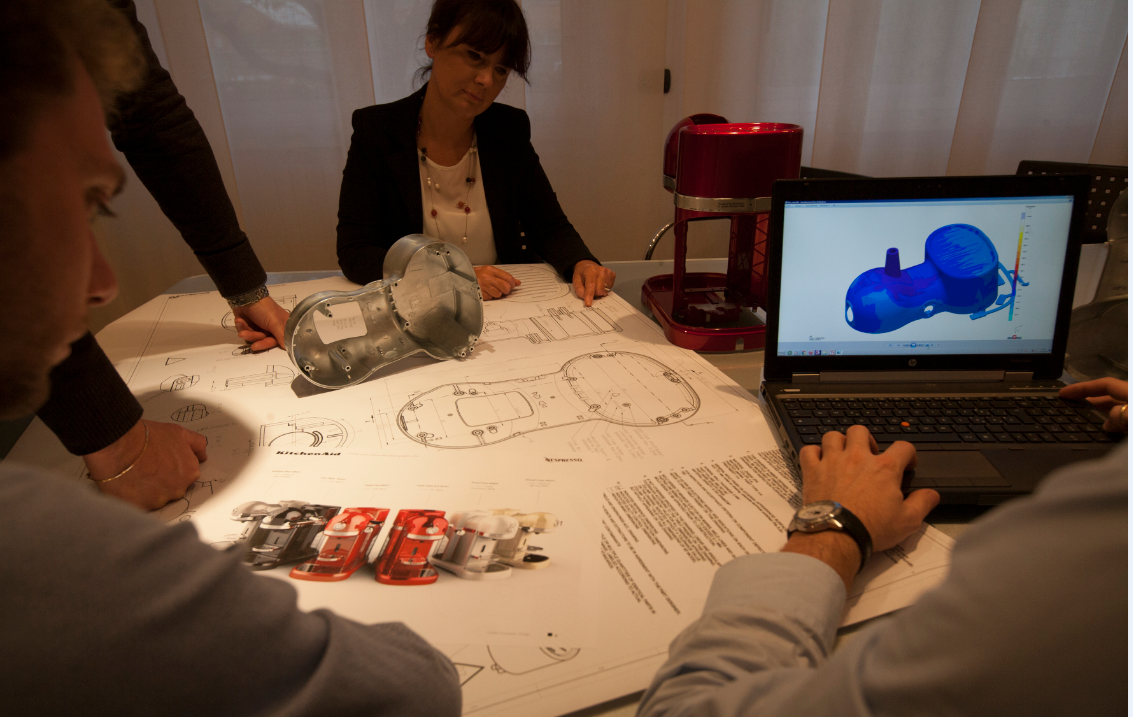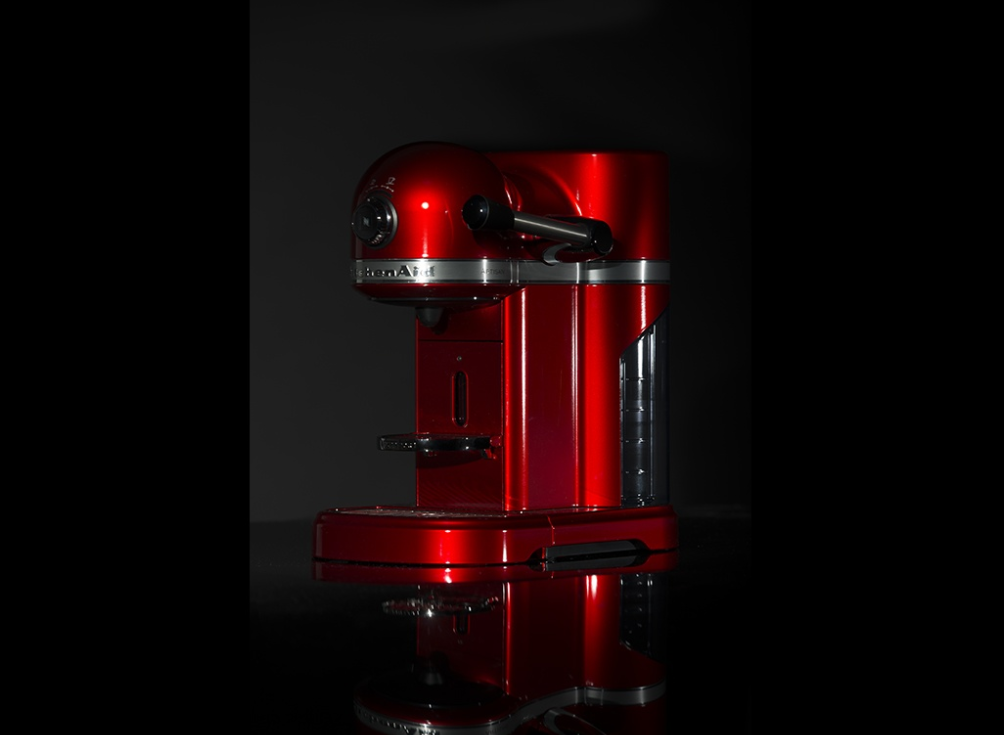As winner of numerous international awards, Bruschi Spa is known for its innovative approach in design and technology. We are glad to share our insights and experiences with the industry members.
Functional beauty: the case of Nespresso KitchenAid Artisan 5KES0503
In this post we are going to describe the business philosophy of functional beauty. Starting from this philosophy, Bruschi created Nespresso KitchenAid Artisan 5KES0503, a design coffee machine that led the company to the victory of the prestigious European Zinc Die Casting Competition for design in 2016.

Bruschi is a committed supporter of a service called co-design: a collaboration between customer and supplier that aims to obtain results which fully satisfy both sides. Client and supplier can thus exchange information and opinions, in order to focus on critical issues, technical characteristics and requested quality of the product. This service is fundamental to create a product compliant with the manufacturing process, technical functionalities and aesthetical characteristics that satisfy both costumer and supplier. The coexistence of functional and aesthetic features in a single product has always represented a central concern for Bruschi, which has led to the conception of the business philosophy of functional beauty. According to this philosophy, a product is composed of functional elements and aesthetic characteristics that coexist and influence each other.
The intersection of co-design and functional beauty, together with its engineers’ expertise and manufacturing processes, allowed Bruschi to produce Nespresso KitchenAid Artisan 5KES0503, a design coffee machine which led the company to the victory of the prestigious European Zinc Die Casting Competition for design in 2016.
CO-DESIGN
As previously stated, co-design is a collaboration between client and die casting supplier and it is fundamental to obtain a product that can satisfy technical requirements of functionality and be at the same time in compliance with the process of die casting. This kind of approach is strictly related to the partnership between supplier and customer: co-design makes it possible to analyze every detail of product design and process design in depth and it helps strengthening the cooperation day by day. By applying this approach, every stylistic excess and useless characteristic will be eliminated: once only functional part remains, it is possible to concentrate all the efforts on improving the appearance of the mechanical part, granting eye-catching products. This method helps to improve the production process, to cut costs and to have beautiful products fitting the theory of functional beauty.
FUNCTIONAL BEAUTY
According to Bruschi, functional beauty is based on the removal of needless details while focusing on enhancing the aesthetic qualities of the remaining functional parts. The coexistence of aesthetics and performance is the core of functional beauty: a cosmetic requirement can therefore become a functional advantage and vice versa. These theories come to life through the collaboration between Bruschi and Kitchen Aid, thanks to the common efforts on the choices of alloy and shapes of the covers, on the way to reduce weight and on the surface finishing with the idea of reducing the useless parts and to improve aesthetically the functional parts.

THE CASE OF NESPRESSO KITCHENAID ARTISAN
Zinc is the ideal material to deliver this concept, since it can be used to obtain both strictly functional components and highly aesthetical external parts, and everything between these two extremes. This adaptability of the material is best perceived in our ZAMAK housing for Nespresso KitchenAid Artisan. This designer coffee machine is composed of eight zinc pressure die cast parts, with weights between 2.2 kg and 75 g.
Bruschi collaboration with KitchenAid began with their idea of creating a new coffee machine characterized by stunning shapes and innovative finishing: the design included round and sinuous shapes that were to be enhanced by a bright red powder coating.
Surface finish was another focal point: the new design needed to catch the eye of consumers and the choice of KitchenAid signature color, also known as Bright Candy Apple red, would have guaranteed the result. However, the application of a powder coating would surely enhance every imperfection in surface finish.
CHOICE OF THE MATERIAL
During the co-design process, the first choice was what material to use to embody the philosophy of functional beauty: the selected alloy should have been apt to cast complex shapes and resist to the finishing and painting treatments required, in order to satisfy both functionality requirements and aesthetics of the product.
ZP5 was chosen over other materials for its excellent surface finish, strength, ability to cast very fine details and feel of quality at touch. The desired shapes would have been unachievable with other metals, since die casted zinc allows to create smaller draft angles, smaller and longer cored holes and thinner wall sections, while keeping the surface smooth.
This is an excellent example of how the functionality of the chosen alloy influences the beauty of the product: the creativity of designers would have been limited by material functionality and mechanical characteristics, preventing them from the creation of bold, innovative designs.
NO MACHINING
As the main goal was to achieve an ideally smooth surface, Bruschi team worked together with KitchenAid designers to create a beautiful design, with minimum machining and assembly work. Through a deep analysis of tolerances and shapes in joint positions, all of the eight parts were casted with no further need for machining operations. A study of draft angles of matching parts allowed to avoid any further operation in assembly process, granting the aesthetical continuity KitchenAid designers were aiming for: casting tolerances of 0.05mm between assembly holes were achieved, requiring no further adjustment during assembly and almost no secondary operations.
Furthermore, this purely cosmetic quality resulted in two functional advantages: the reduced machining brought cost reduction in the component production and the compatibility of the parts became a quick quality control, since it allows to instantly recognize deformed or defected casts.
SURFACE FLATNESS
The last challenge concerned surface flatness: these difficulties were overcome through a close collaboration between Bruschi team and KitchenAid technicians. Defining together the criticalities helped in finding the best way to deal with them from design phase, avoiding mistakes in prototyping and reducing scraps.
In order to obtain the necessary surface quality the internal structure of the die cast should have been excellent and free of porosity, since during powder coating process the castings are heated up to around 200° C. In addition, the extractors and injection points must have been placed on the internal side of the component, to avoid leaving traces on the external surface.
For this reason, the right position of injection point and overflows were designed with MAGMASOFT, to guarantee the correct filling of the cavity while avoiding air entrapping and undesired porosity. The use of a simulation software to determine the positioning of extractors and injection point granted the right filling without leaving any marks on the surface.
To further reduce the risk of air trappings, Bruschi applied under vacuum die-casting: the use of vacuum valve allows the production of castings with no problem of blistering or bubble creation, resulting in a close to zero reject rate.
All of these efforts payed off: at the end of thermal curing of the powder coating, flatness of the surface was still within a tolerance of 0.3mm. An amazing result that is additionally enhanced by the luster of the final red varnish.

KITCHEN AID ENDORSEMENT
At the end of cooperation with Bruschi, Darrin Keiser – Kitchen Aid Small Appliances Global Senior Quality Manager – was satisfied and impressed with the result and declared: “My experience with Bruschi has been a very gratifying journey. From the early days of the project where we had to choose a supplier with highly capable people, methods and manufacturing process, it was clear to me that Bruschi was a winning choice. Its team is committed to the high quality expectation our brand is associated with.”
To get updates on trends and innovations in the Zinc Die Casting industry, you are welcome to subscribe to our blog.

